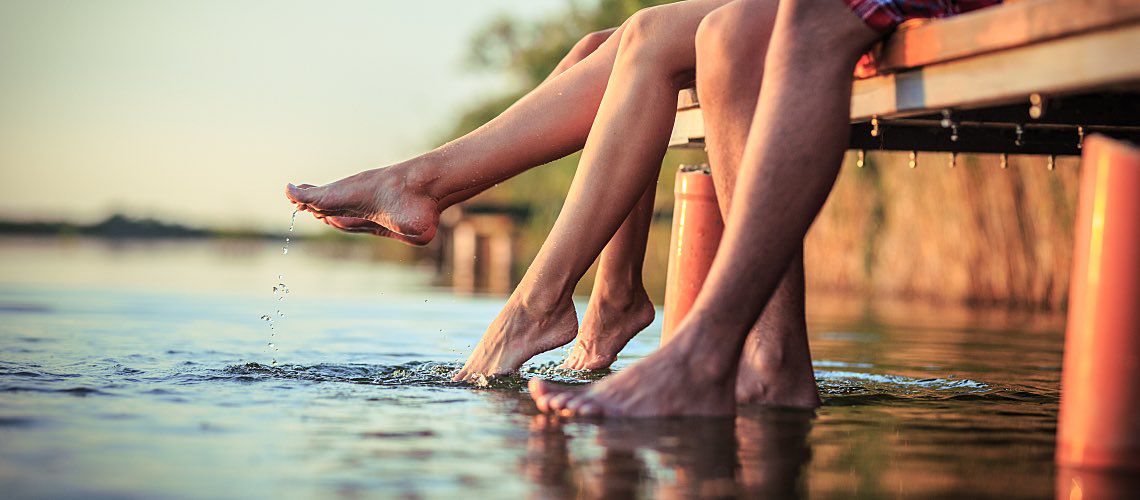Get Ready for Recreational Water Testing Season Now With These 4 Steps


Soon, recreationists around the country will start heading to oceans, lakes, rivers, and pools. Regular testing plays a critical role in protecting them as they engage in fun aquatic activities. If you're a lab manager, there are few things you can do right now to prepare for the impending surge in seasonal water testing requests.
1. Identify Local Recreational Water Testing Needs
Beach water monitoring picks up as the days warm on the coastlines and in the Great Lakes region. But even if your lab is in a landlocked state, your services may be called on to test recreational water bodies like lakes, rivers, and streams.
FREE Best practices guide: Interpret your water testing results with confidence
Regulatory bodies normally select testing sites and schedules based on where and when people interact with water. The standards for these sites — which can include public and private beaches, ponds, picnicking areas, and even boat ramps — generally depend on how often they are used, especially for swimming. Aquatic facilities like pools, water slides, and hot tubs must also be regularly tested and disinfected.
When gearing up for these testing partnerships, your lab should also consider what outreach efforts will be necessary. For instance, sharing tips and information surrounding regional water safety threats as they happen can help preserve public health and generate awareness for your services. Take time now to determine who will lead the charge on marketing efforts nothing falls through the cracks come busy season.
2. Know Which Waterborne Pathogens Pose a Risk
The Environmental Protection Agency's Recreational Water Quality Criteria document outlines recommendations for determining fecal contamination in freshwater and marine water. They advise using enterococci and E. coli as markers of contamination in freshwater, and enterococci as a marker in marine water. Additionally, Cryptosporidium, Pseudomonas, and Legionella have all been associated with disease outbreaks in treated recreational water bodies since 2000, according to the Centers for Disease Control and Prevention (CDC).

Testing for these pathogens is crucial to preserve public health and protect those particularly at risk for recreational water illness, such as children, pregnant women, and people with weakened immune systems. According to the CDC, signs of recreational water illness include skin, ear, eye, respiratory, and wound infections, as well as gastrointestinal issues.
Lab analysis is especially important when assessing the safety of pools. Certain germs can tolerate chlorine or other disinfectants and go on to cause illnesses and diseases, ranging from gastrointestinal symptoms to hot tub rash. Consider sharing CDC recommendations with your clients to empower them to take measures to keep their pools safe year-round. These include checking pH and disinfectant levels at least twice daily, upping that frequency during busy periods.
3. Stock Supplies and Perform Preventive Maintenance
Come springtime and summertime, not having the right supplies in stock can be detrimental to operations. Check now that you have the sample bottles, test kits, substrate, and reagents you need to succeed later.
Government agencies may test popular beaches as often as once per week, issuing advisories as needed, during the recreational season. And then there are the retests to consider. Creating a schedule around these factors can help you flesh out the number of and type of test kits you'll need. Also, consider everything your customers may need, from sample bottles to pH strips. If storage space is limited, schedule inventory at least monthly to assess how often you should reorder certain supplies.
Make sure your equipment is ready, too. Both lab and field equipment should undergo routine preventive maintenance. It's easy to put this task on the back burner but remember, it's one of the most cost-effective and least stressful ways to keep your lab operations running smoothly.
4. Ensure You'll Have Adequate Staff Coverage
How your lab tackles the influx of testing depends largely on the human resources available. Beyond ensuring you have a technician available to perform every type of test, you'll also want to consider factors like burnout and your overall budget when creating your seasonal schedule.
While there may be circumstances where mandatory overtime is necessary for your lab to keep up with short hold times, having staff work more than their usual hours may negatively affect their productivity, quality of work, and motivation. To preserve your service and reputation, strike a balance between overstaffing and excessive overtime. This may mean bringing on temporary employees or interns to help keep up with all the work.
Make scheduling decisions based on how many tests of each type you may need to run every day, who can handle them at which bench, and how long it will take to conduct the test and input the results. Then, try to accommodate what time off requests you can without compromising the workflow of the lab.
By getting ready now for future recreational water testing needs, your lab will be better positioned to both keep the public safe and generate a dependable source of revenue in the nearing months.






